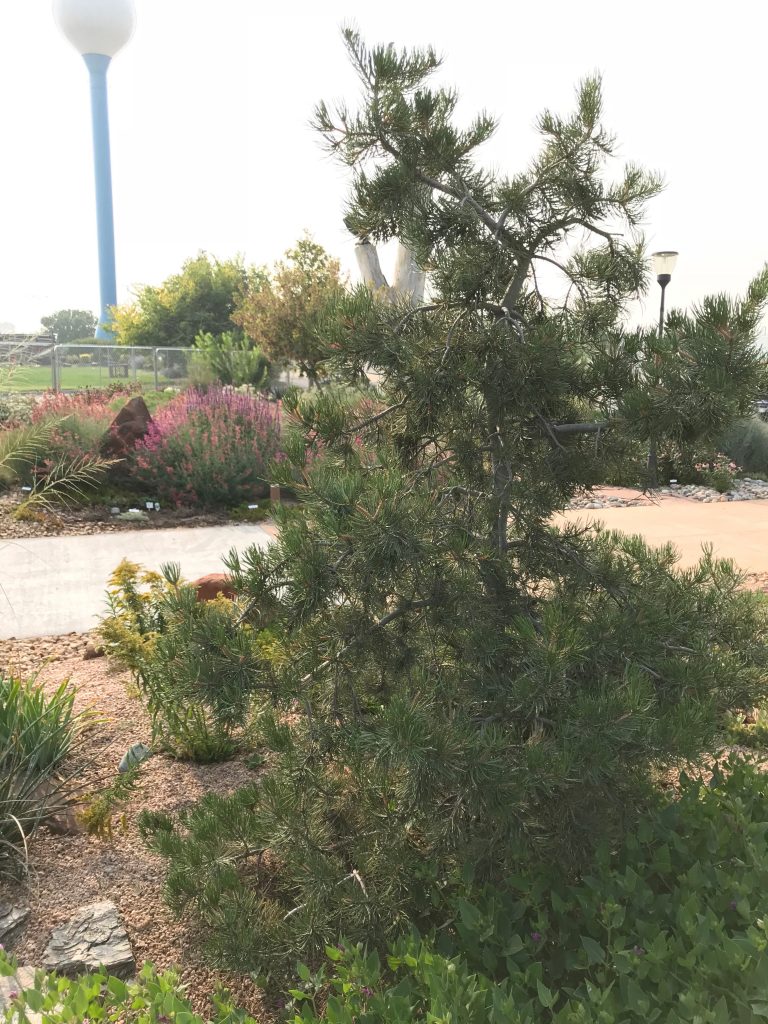Pinus edulis

| Scientific Name | Pinus edulis |
| Common Name | Pinyon Pine |
| Family | Pinaceae |
| Habit | Conifer, evergreen tree |
| Growth Form | Pinyon Pine tree characteristic is rounded or vase shaped. It reproduces from seed. Bark is fairly thin and ridged; light gray or red-brown, fissured. Needles in groups of 2; 1″-2″ long; fairly stiff; yellow-green; evergreen, remain on tree 3-9 years. Twigs fairly stout; orange to brown colored. Buds small, oval, brown. |
| Mature Size | Height: 10′-30′ Width: 20′-25′ |
| Flowers | Flowers are Inconspicuous. Fruit a woody cone with very short or no stalk; 1″ to 2 1/2″ long; oval to round; reddish-brown; scales few and ot tipped with a prickle; seeds wingless and large, about 1/2″ long, thin -shelled, edible. |
| Hardiness | Zones 4-8 |
| Sun Requirements | Full Sun to partial shade |
| Water Requirements | Moist to dry soils |
| Soil Requirements | Dry and rocky soils. Loam, clay, sandy soil. Highly acidic to highly alkaline pH. |
| Other Info | Native to North America. The seeds (“pine nuts”) are harvested in autumn (generally September through October). Usually grows on the higher elevation sites in the pinyon-juniper woodlands it occupies. Attracts birds and squirrels. |
| Additional Photos |  |



